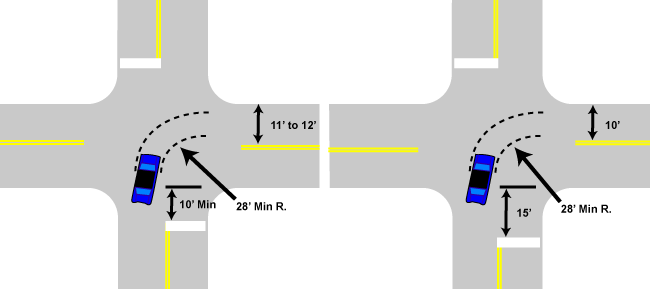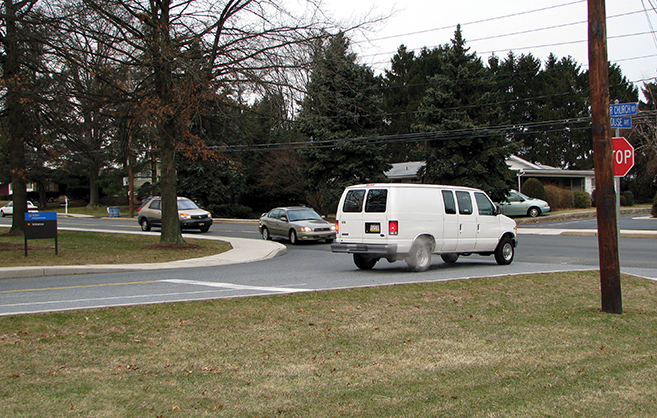Stop Line Markings

The location of the stop line is determined primarily by the geometry of the intersection, road width, and the design-vehicle turn radius. The stopping point should be positioned on the approach leg such that it will not conflict with vehicles turning left from the cross street. The stop line should be marked only across the approach lanes in which traffic is, or may be, required to stop. The line should be parallel with the intersecting roadway or crosswalk.

The stop line is located at the desired stopping point. In no case should the stop line be located more than 30 feet nor less than 4 feet from the edge of the intersecting roadway or crosswalk. The stop line is reflective white and is no less than 12 nor more than 24 inches wide. The width depends on the speed of the roadway and/or the presence of hazardous conditions. There may also be state-specific criteria for setting the width. Yield lines are applied at the desired yield point in compliance with a YIELD (R1-2) sign or a Yield Here To Pedestrians (R1-5 or R1-5a) sign or at locations on uncontrolled approaches where drivers are required by State law to yield to pedestrians. Yield lines shall consist of a row of solid white isosceles triangles pointing toward approaching vehicles extending across approach lanes to indicate the point at which the yield is intended or required to be made. The individual triangles comprising the yield line should have a base of 12 to 24 inches wide and a height equal to 1.5 times the base. The space between the triangles should be 3 to 12 inches.


